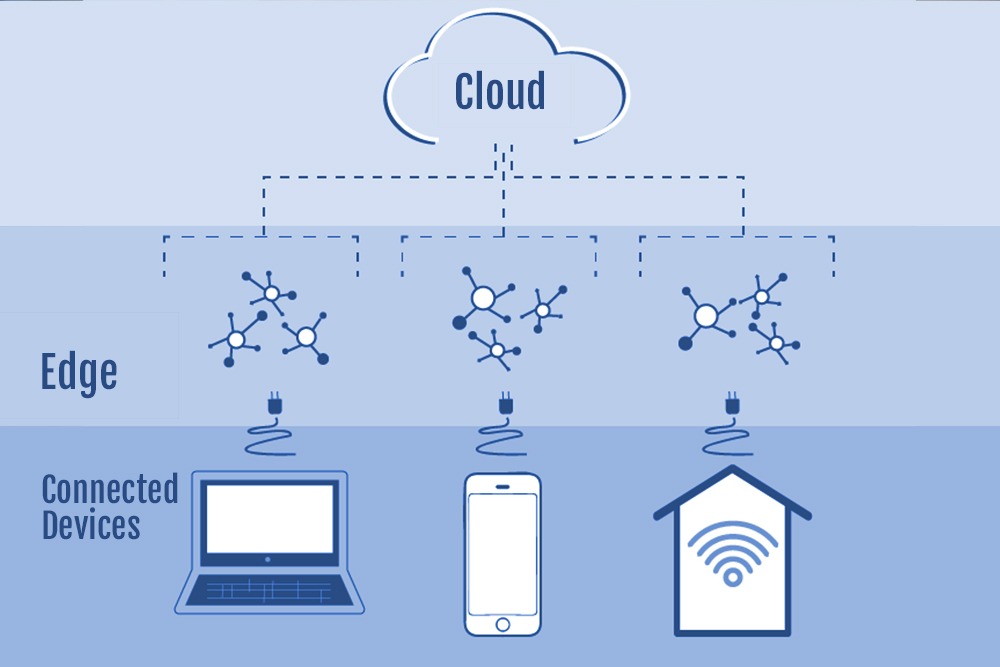Entrepreneurs, business owners, and influencers in the tech world always need to do whatever they can to increase efficiency and stay one step ahead of the competition. Tools that help aid this need for constant increases in performance are very valuable, and that is why it is worth taking the time to explore the concept of edge computing. This technology is especially valuable for those who manage and oversee large amounts of processing power, including software design companies, technology consulting companies, and innovation strategists. Cloud based solutions may soon be viewed as a slower predecessor to edge computing.
What is Edge Computing?
Edge computing is essentially a way of making cloud-based computing more efficient through limitations or re-directions on certain processes that work better when executed locally. Small stations that execute more quickly by being close to the origin of a request for information have a clear advantage in speed. This has broad implications for sensor data, customer engagement, and even virtual reality. Edge computing is necessary to save processing bandwidth and resources by prioritization when physical spaces and organizations have so many connected devices demanding computing power at the same time. This is way of integrating all around connectivity and even control of the physical world to an immersive system of computing. Its uses will extend to government, transportation, business education, and a number of other unforeseen fields. For example, an application might be a major city with surveillance cameras on every traffic light and street corner. Ideally, they will want to conserve the amount of resources necessary to keep them all running and save time by having data retrieved locally rather than on a far away server.
Why is Edge Computing Going to Matter in the near Future?
Edge is poised to be the next breakthrough technology in global telecommunications. Leading organizations are already in the process of retraining their staff and aligning resources while preparing to implement edge computing solutions. Major players in the market of content delivery networks already offer edge computing or will begin to do so very shortly. Internet of Things technologies will also be impacted greatly, as the need for increased interactivity between devices in real time demands solutions that can come locally, rather than sending requests back to the web or distant servers. As this technology becomes widespread, the need to implement it will be necessary to stay relevant and competitive.
What are Some Businesses that will be Impacted by Edge Computing Soon?
Edge computing has the potential to have very widespread applicability as a replacement for most common cloud based solutions. This is because the increased efficiency of edge computing over having to send information back and forth to the cloud can be applied to almost all smart devices, which benefit from localization. These devices often need information specific to the user’s location, which is why is makes sense to have a way to reach this data close by rather than off in a far away cloud. Such implications mean the software that retrieves this local data for users, as well as the devices themselves, and their methods of tracking a user’s location, all need to access edge based solutions. All of these categories can include large amounts of both hardware and the applications they run. Businesses that specialize in the internet of things will want to have this kind of information sent between devices as quickly and easily as possibly for a more seamless user experience. Organizations that need image data from multiple cameras or the ability to create quick customer service through integrated point of sale technologies may be obvious applications. Companies which bring media and entertainment experiences into the home are also aware of the need for people to share information between mobile phones, computers, gaming consoles, televisions, and other devices with smart technology. Machine learning can also be integrated into a device’s own internal software to give quicker responses, rather than stored on a server.
The Push Toward Edge Computing is Here to Stay
It is safe to say that newer, more efficient technologies are always quickly adopted once they become available. Emerging technologies that require real-time intelligence will need to make quick decisions rather than wait for cloud processing. This can be in robotics, artificial intelligence, self-driving cars, virtual assistants, and other similar applications. The telecommunications giant Cisco has already declared that the next generation of 5G networks will also have increased needs for security, reliability, and speed that will require edge based computing. All of these factors taken together show that most people will soon be interacting with edge computing solutions on a regular basis in the near future, whether they realize it or not. Your business will also benefit by becoming aware of these changes and implementing them into future planning.
Looking to stay on top of the latest industry trends? Check out our blog and follow us on Instagram and LinkedIn to stay in the loop on everything beverages.



